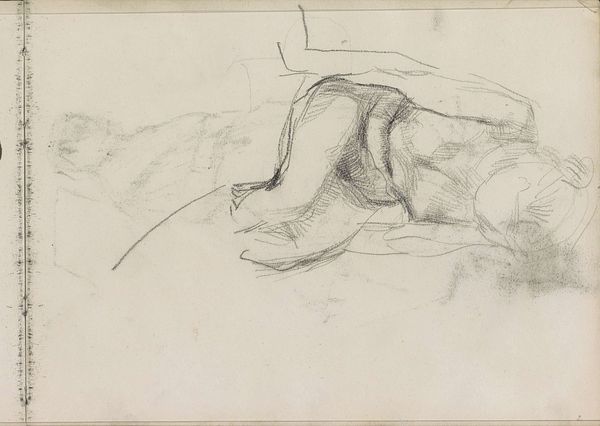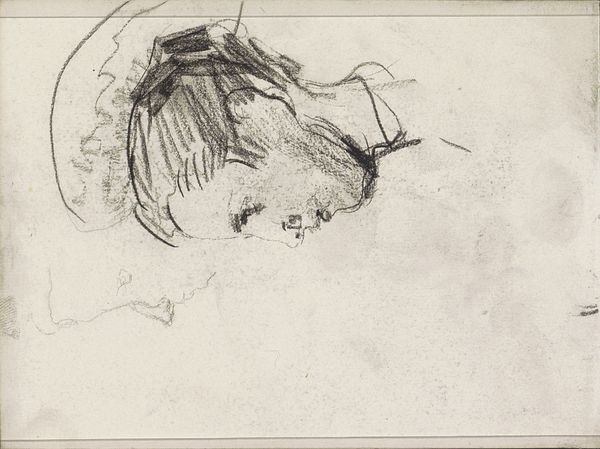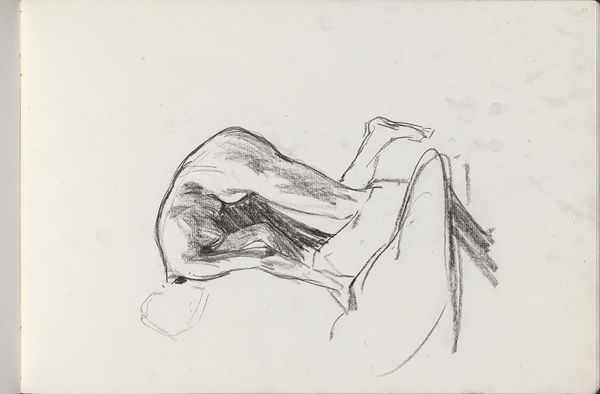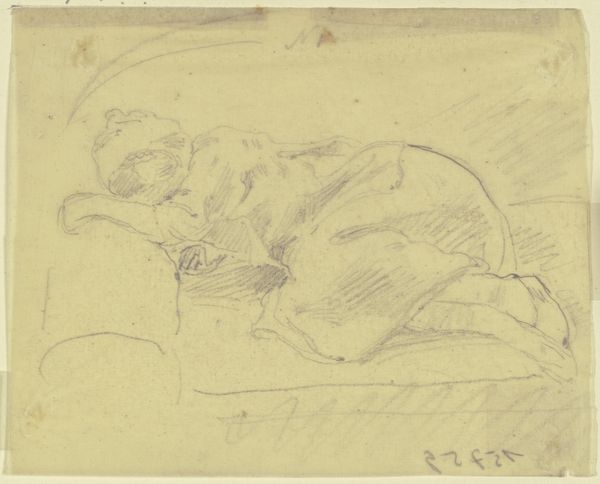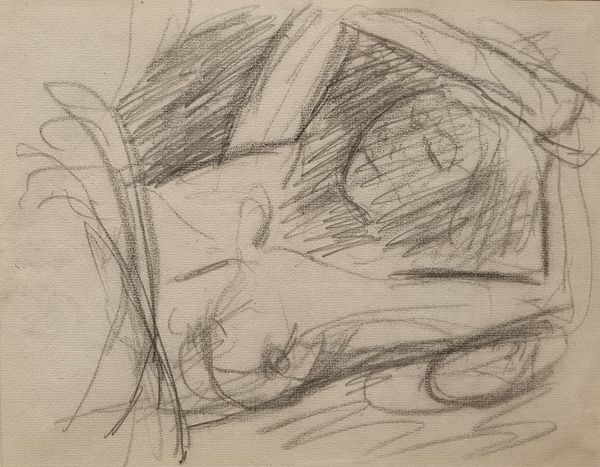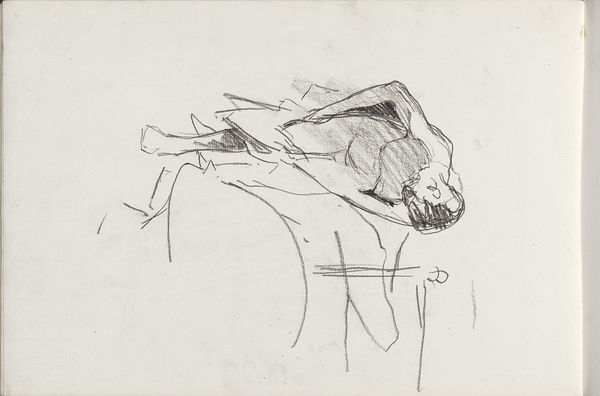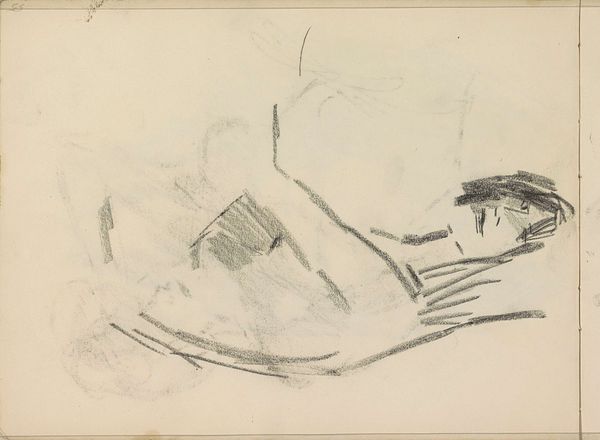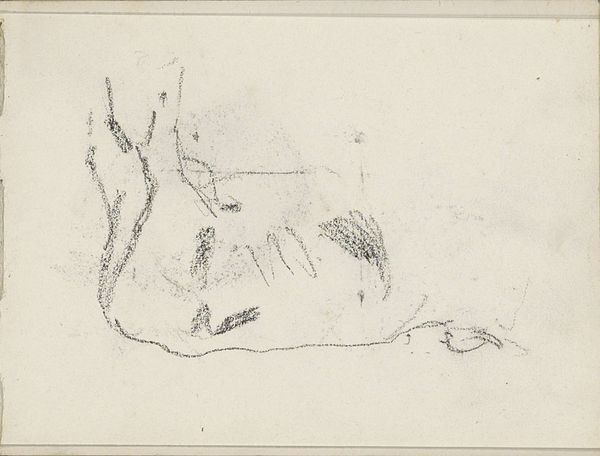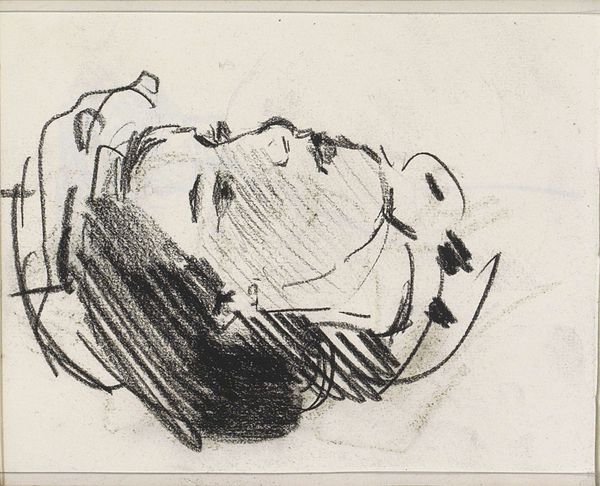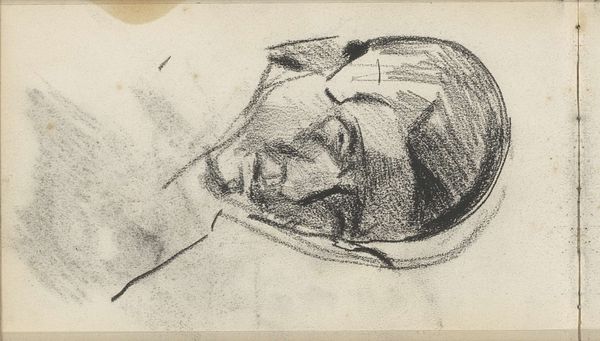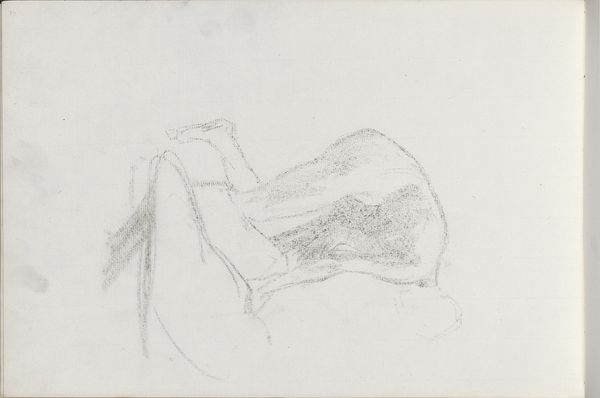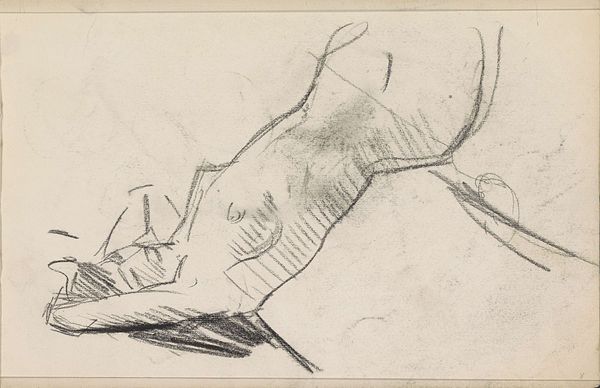
drawing, charcoal
#
portrait
#
drawing
#
animal
#
dog
#
charcoal drawing
#
pencil drawing
#
charcoal
#
realism
Dimensions: height 161 mm, width 260 mm
Copyright: Rijks Museum: Open Domain
Curator: It's hard not to be drawn to this seemingly simple drawing of a dog's head. Editor: I agree. The relaxed posture and heavy lines give off a palpable sense of lethargy. You can almost feel the weight of sleep pressing down on this animal. Curator: What we have here is "Kop van een liggende hond," or "Head of a Recumbent Dog," crafted from charcoal some time between 1821 and 1886 by Guillaume Anne van der Brugghen. Editor: The subject certainly embodies tranquility, doesn't it? Dogs are so often symbols of loyalty, but here the symbolic language shifts to that of domestication. The dog represents ease and subservience. Curator: That's a powerful interpretation. I see, in its posture, a reflection of the changing role of animals in 19th-century European society. They were moving from purely utilitarian roles to companions, reflected in increased animal portraiture commissions at the time. This work moves against some standard depictions, avoiding romanticism. Editor: True. It feels utterly unidealized, capturing a real animal in a fleeting moment of repose. The soft rendering around the dog's features suggests peace. And if the dog can feel so contented within this domestic space, might we also aspire to a life lived as easefully? It holds some invitation to meditation, surely. Curator: I agree there is no shying away from the very real presence of the animal. Artists like van der Brugghen were key in forming new artistic niches and genres catering to emergent markets and the societal aspirations of the ascendant middle class. Images such as these began showing up more regularly within private collections. Editor: Ultimately, there’s something primal in the form itself—connecting us to images of animals dating back to the Paleolithic era. The symbolism of this one invites our quiet contemplation. Curator: Indeed. It serves as a potent reminder of the intricate web connecting us to our domestic spaces and the living creatures that dwell with us. Editor: Well said, an art piece that seems so humble offers great nuance when inspected closer.
Comments
No comments
Be the first to comment and join the conversation on the ultimate creative platform.
